


Before the global pandemic, the healthcare industry was slow to adopt innovations and revolutionary solutions. However, endless lockdowns across the world have sped this process up and created room for new technological projects in healthcare software.This article is your handbook on healthcare software development, based on our experience and over a dozen completed projects. We examine key features, recent trends, and common challenges. Let’s dive in!
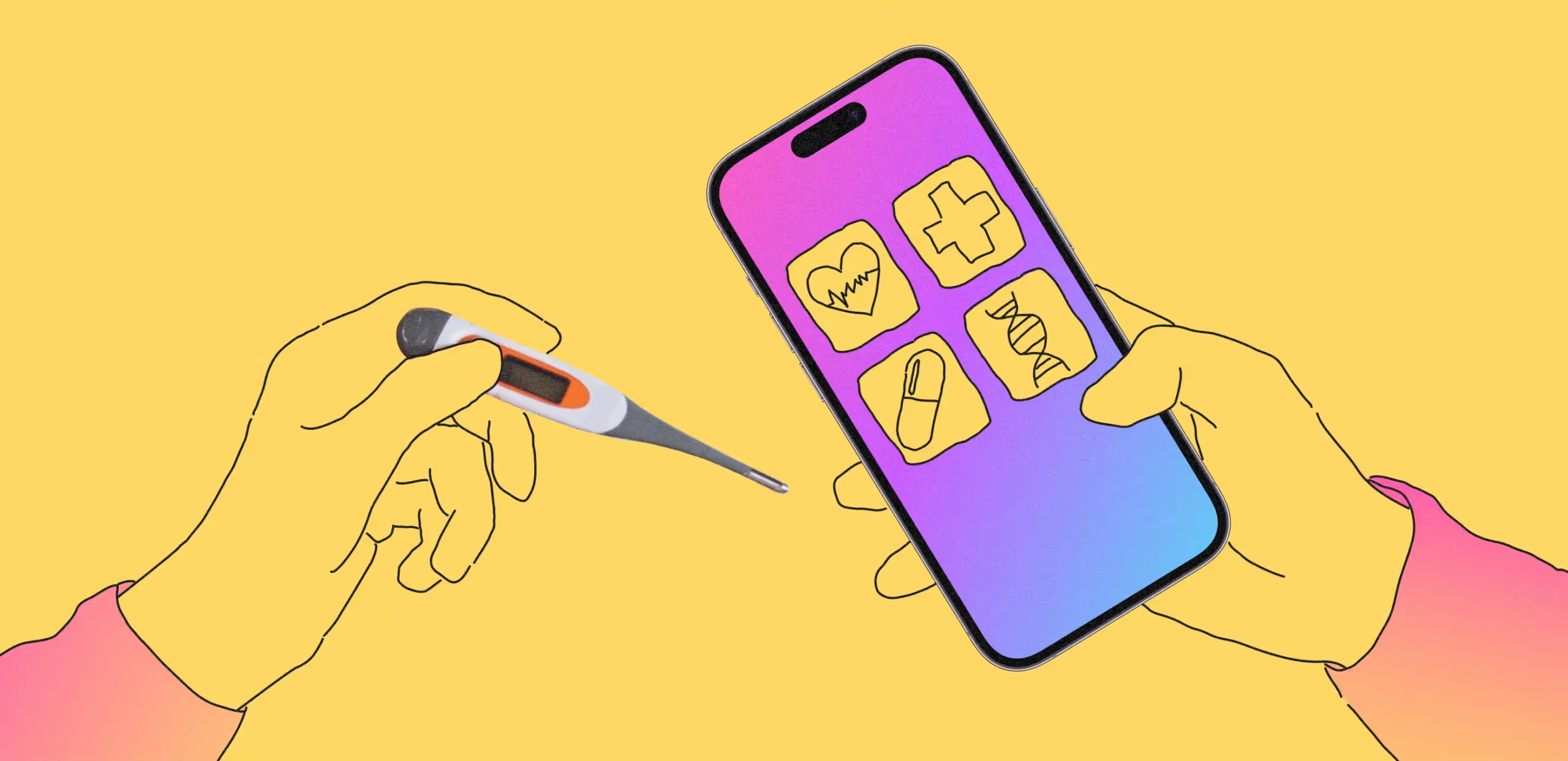
There are two ways of interpreting this term.
Let’s start with the broader definition. Software for healthcare includes web and mobile applications that assist healthcare professionals, insurance companies, and patients in delivering medical services. For example, patient portals, telehealth platforms and appointment scheduling systems.
More specifically, medical software is used to track, analyze and interpret a patient’s health data. For example, heartbeat trackers, symptom checkers, or medical image analysis platforms.
At Purrweb, we're happy to help healthcare providers and organizations with their jobs. As professionals in medical software development, we provide solutions that simplify doctors’ work and make medical care accessible to patients from different locations.
A practicing oncologist approached us with the idea of a platform that would help doctors perform check-ups for cancer patients and reduce the need for face-to-face appointments. This is why we developed a healthcare web app called Medico.
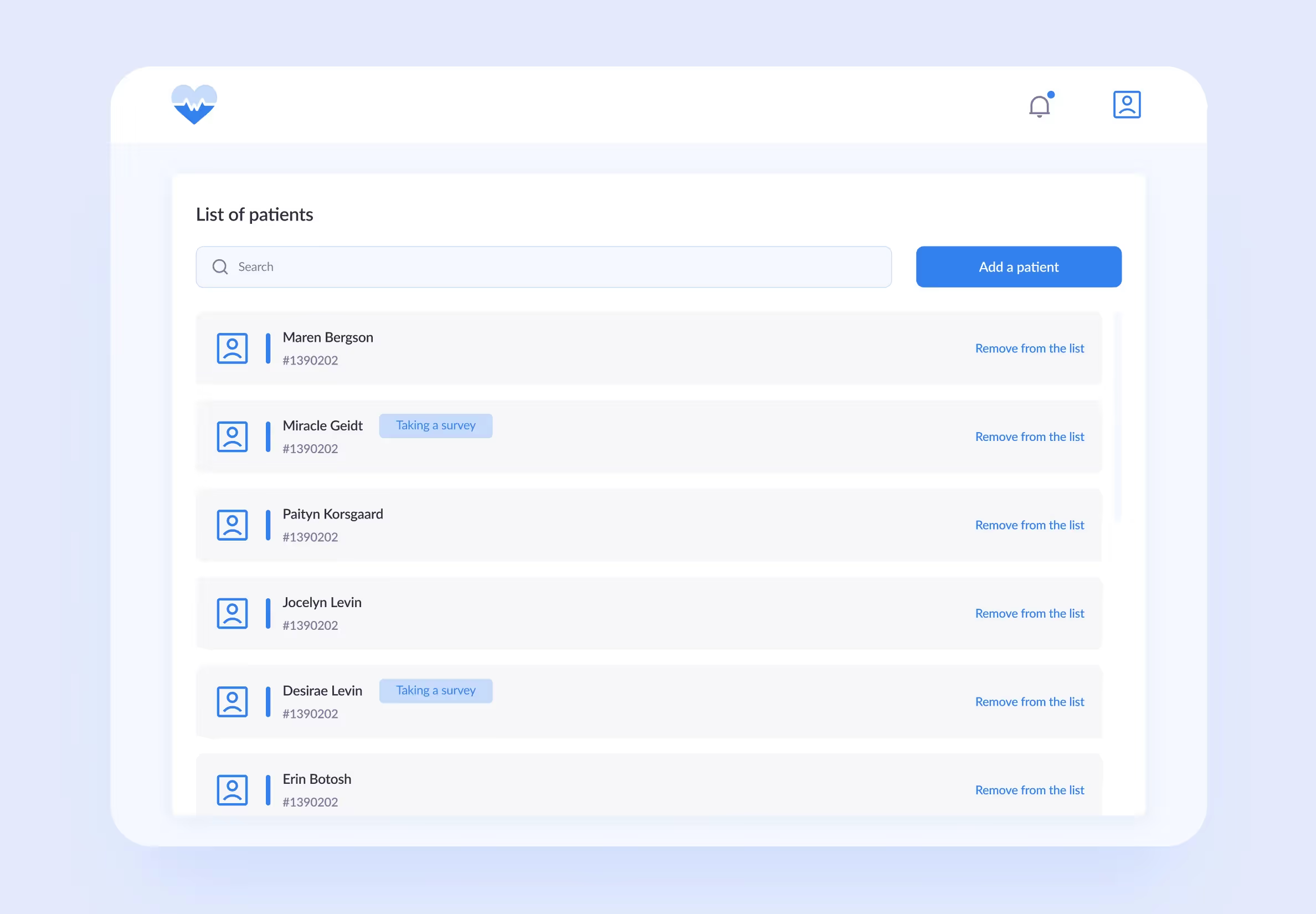
Oncologists check in with their patients on a regular basis — they need to know about side effects of medications and adjust the treatment plan if there's no improvement. This process requires frequent face-to-face appointments, which can be exhausting for cancer patients. For healthcare professionals, it also increases their workload and reduces the time they could spend helping other people.
At the time, there were no ready-made healthcare software solutions. Within a year, we delivered a web and mobile app that allowed users to:
We can proudly call it a custom healthcare software, and, as of now, Medico is used as a SaaS solution in oncology departments.
A platform for psychological consultations seems to be a service that has a wider user base. However, for the GSR platform, we first had to develop an MVP to test the demand for the product.

Our client wanted to create a simple online catalog of therapists and add an appointment booking feature. He was looking for a healthcare software development company that would get the job done and wouldn’t insist on a more complex version.
Within 4 months, Purrweb created an MVP with the following flow:
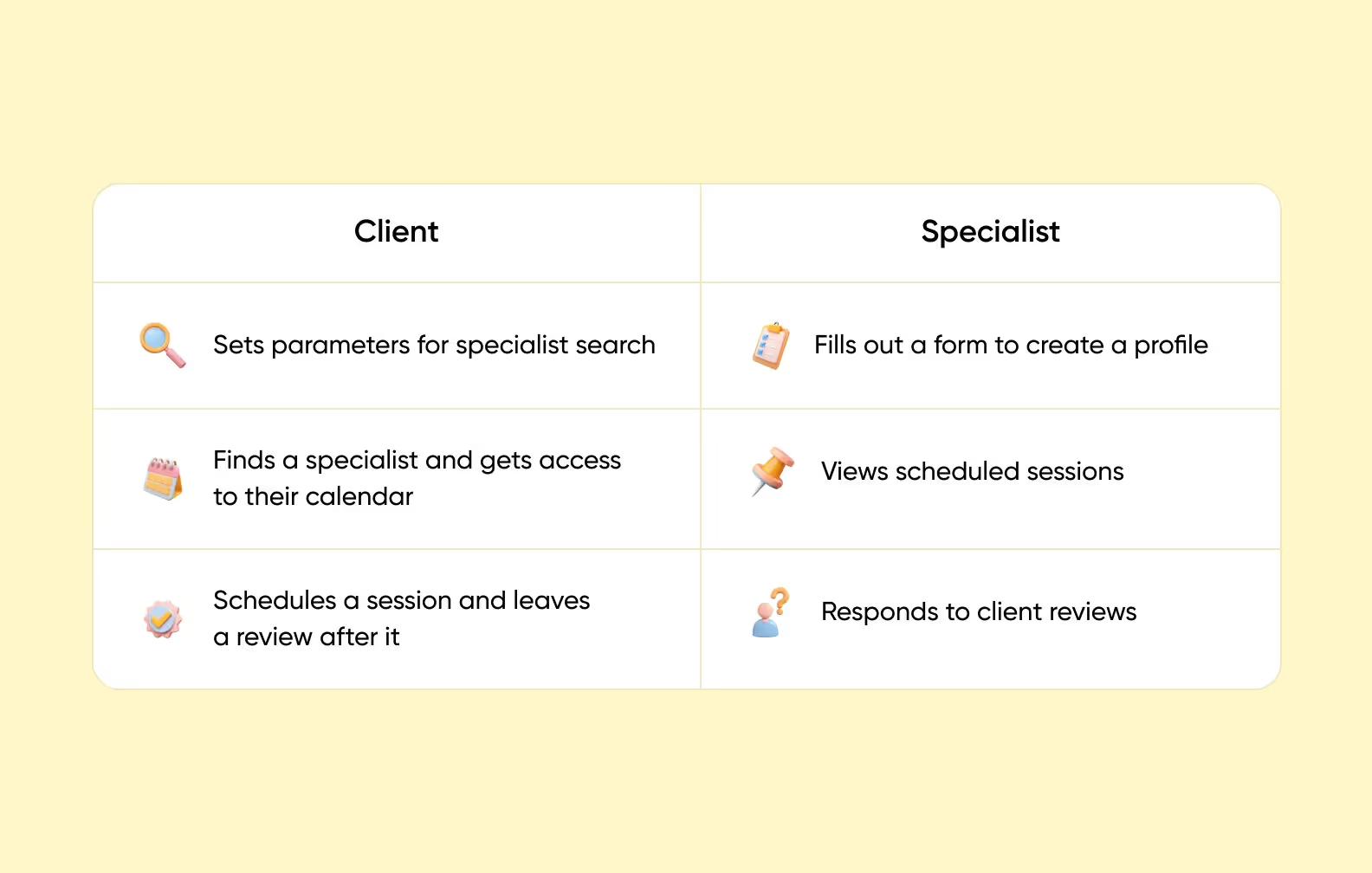
With the GSR, people can get access to professional healthcare providers wherever they are.
Biogeek is a web app that helps users keep their lab tests in one place and monitor their health. We designed the app with several markets in mind, as the founders wanted to expand the product later.

The platform analyzes the lab test results and presents the information in bar charts. Users can interpret them without the help of healthcare professionals.
The service also provides recommendations for a healthy lifestyle. If any health indicator doesn’t meet the norm — it immediately informs the user.
Software solutions can improve the experience at any level of healthcare. Here are a few examples of what healthcare platforms can do:
Healthcare platforms replace piles of physical documents and automate routine tasks for medical professionals. For example, electronic health records (EHRs) help service providers update and track patients’ medical histories in real time, as well as have access to prescription records, notes and other health-related information.
Another advantage of EHRs is having all patients’ data in one central source. There's no need to gather up past diagnoses or lab results from multiple departments or sources as that info is accessible in the database.
During the pandemic, not all patients could visit healthcare organizations and go to a doctor in person. Even those patients who live in rural areas or are part of vulnerable groups took advantage of telemedicine options such as virtual visits, remote patient monitoring and chatting with online healthcare professionals.
Many fitness and wellness trackers encourage users to reduce health risks by implementing small yet effective habits into everyday life. These include exercise, meditation, mindfulness, standing-up reminders etc.
If you’re going into healthcare software development and have minimal experience with the niche, be careful. Although the healthcare industry has room for new innovative startups, it's strictly regulated.
Here are the 4 challenges you may face when creating software in the healthcare sector:
Medical software should comply with local regulations, depending on the region they operate in. For the United States, the main federal law is the Health Insurance Portability and Accountability Act of 1996 (HIPAA), which protects sensitive health information from being disclosed without the patient’s consent. On top of that, many states have their own regulations. For example, the California Confidentiality of Medical Information Act (CMIA), requires that personal health records be private.
In the countries of the European Union, the General Data Protection Regulation (GDPR) regulates how apps should store and transfer data, establishing the rights users have. If your healthcare platform processes the data of EU residents, you have to consider the GDPR requirements as well.
Healthcare software handles sensitive information such as medical diagnosis, prescriptions, billing details and biometrics. Any breach or unauthorized disclosure can cause harm, such as identity theft, discrimination or prescription fraud. To avoid potential legal and reputational consequences, it's essential to think in advance about how you're going to safeguard your databases and servers from attacks which are common in the healthcare industry.
Universally recognized standards and procedures are essential for the smooth flow of data in the healthcare industry. Interoperability standards hold systems together as they change, from hospital EHRs to specialized imaging applications. This allows healthcare data to be shared securely and in real time across platforms.
In healthcare software development, UX is crucial. The users of these softwares take their health and wellness seriously. If there's a medical concern, patients need short and simple answers to their questions. Having a software that follows this minimal, simple approach is key here.
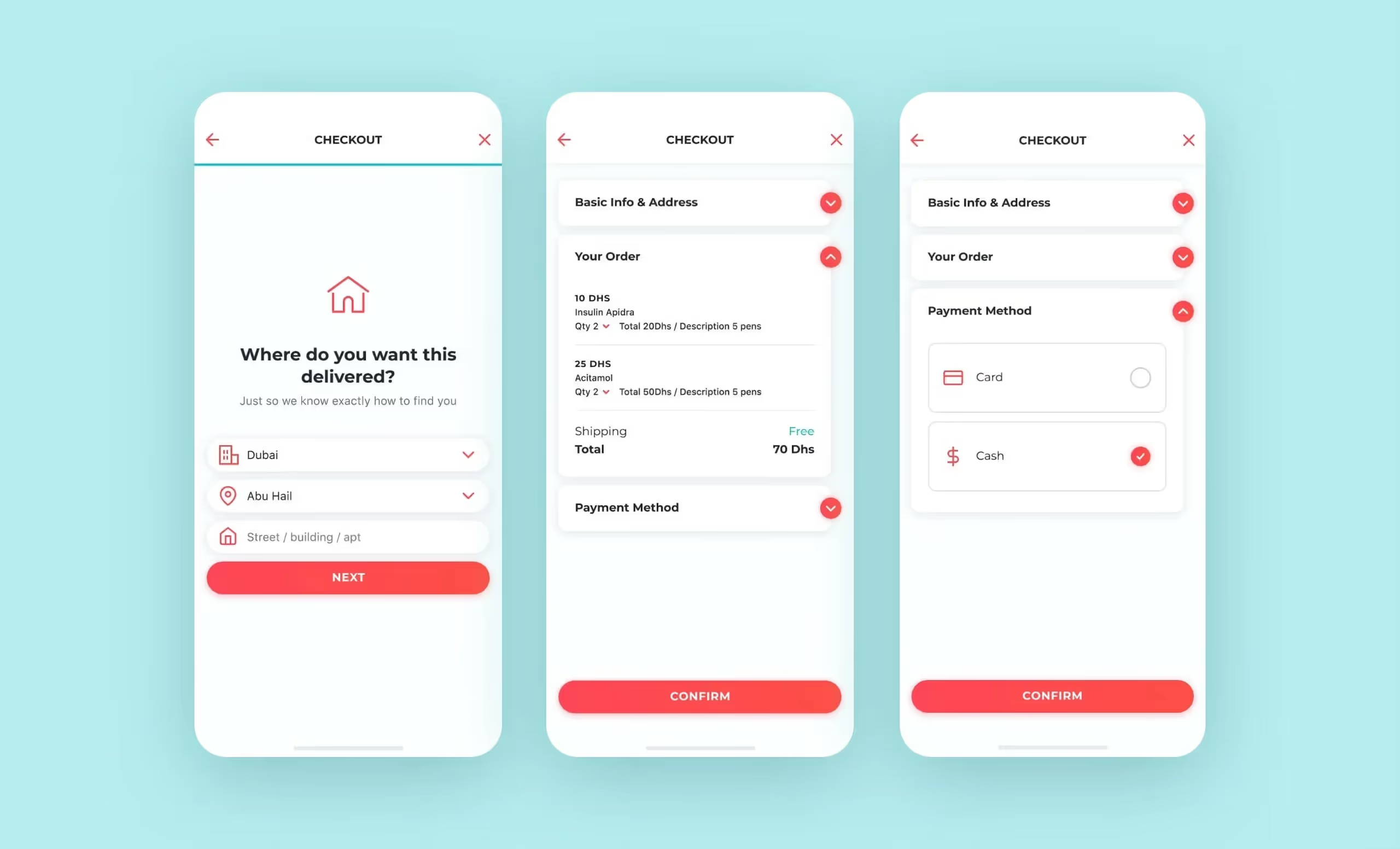
Depending on factors like customer needs and target audience, the platforms can incorporate sets of features and interface flows. Your software should be adaptable, depending on the user. It should have suitable features and data for doctors, patients or insurance representatives.
We put together a list of 4 trending technologies in healthcare software development.
Ever since the pandemic, doctor visits have moved online. It makes sense that instead of driving for an hour, sitting in traffic, and looking for a parking spot, you can see a doctor from the comfort of your home. This trend will continue to rise in the upcoming years.
The progress in artificial intelligence, AI-powered chatbots and health risks assessment tools are the hottest trends. While the ability of AI is still limited and it cannot replace a real doctor, it can help automate many mundane tasks and answer basic questions that patients may have, freeing up the medical staff for other work or reducing staff numbers.
DTx stands for Digital Therapeutics. It's evidence-based software that helps detect, diagnose and treat diseases. There are, for example, mental health apps on the market that use cognitive behavioral therapy principles to help users manage depression and anxiety disorders. Such platforms incorporate tools like exercise, journaling and mindfulness, that have proven clinical effectiveness in treating patients with depression.
The Internet of Things (IoT) is a network of devices that connect to each other in order to exchange information. In the healthcare industry, this technology can help with monitoring patients remotely. Smartwatches and bracelets can monitor heart rate or blood oxygen level in wearers and automatically send this data to a doctor’s tablet, for example. This way, the medical professional can get real-time information about the patient and call them in for a visit when needed.
When you hire an IT team to work on your healthcare software solutions, know that these specialists can often help you with development and beyond. Here are 5 popular services that development teams offer.
The telemedicine platform is high-quality software that allows for remote consultations and patient monitoring. It includes features like visit scheduling, prescription details, payment getaways, and many others. Through telehealth apps, medical care providers can make their services more accessible and available for users who can’t visit a doctor in person.
Prescription management software is designed to organize and manage the medication distribution process in a hospital or pharmacy. These platforms automate data processing and generate notifications for dosage discrepancies to reduce the chance of errors.
UX services focus on the visual aspect and interface logic of your product. Here, a healthcare software development company plants out your platform’s usability to meet the needs of healthcare providers , patients, and other health administrators and figure out how to drive engagement and satisfaction.
Create responsive, high-performing applications for web, iOS, and Android platforms to enhance the convenience and accessibility of your patients. For any healthcare system, including electronic health records (EHR) and electronic medical records (EMR).
These services automate the billing and financial operations of a medical provider and reduce the chance of human error. Send invoices, process payments, payroll, and manage insurance claims — those are a small chink of tasks included in patient billing platforms.
The set of features will depend on the target audience and the main purpose of the product. Take for instance a teletherapy app, you'll need to prioritize video calling functionality, whereas for an appointment scheduling system, you'll focus on appointment calendars and reminders.
We’ve created a list of 5 universally applicable features for any healthcare project.
Keep it short and simple while remaining legally compliant with information gathering. Including legal name, DOB, country, state of residency, social security and the health insurance provider.

When it comes to important topics such as health-related issues, users may have a lot of questions and it can be stressful when they cannot find the necessary information. For these reasons, it’s important to think about support your patients through solutions like a chatbot, 24/7 helpline or FAQs.
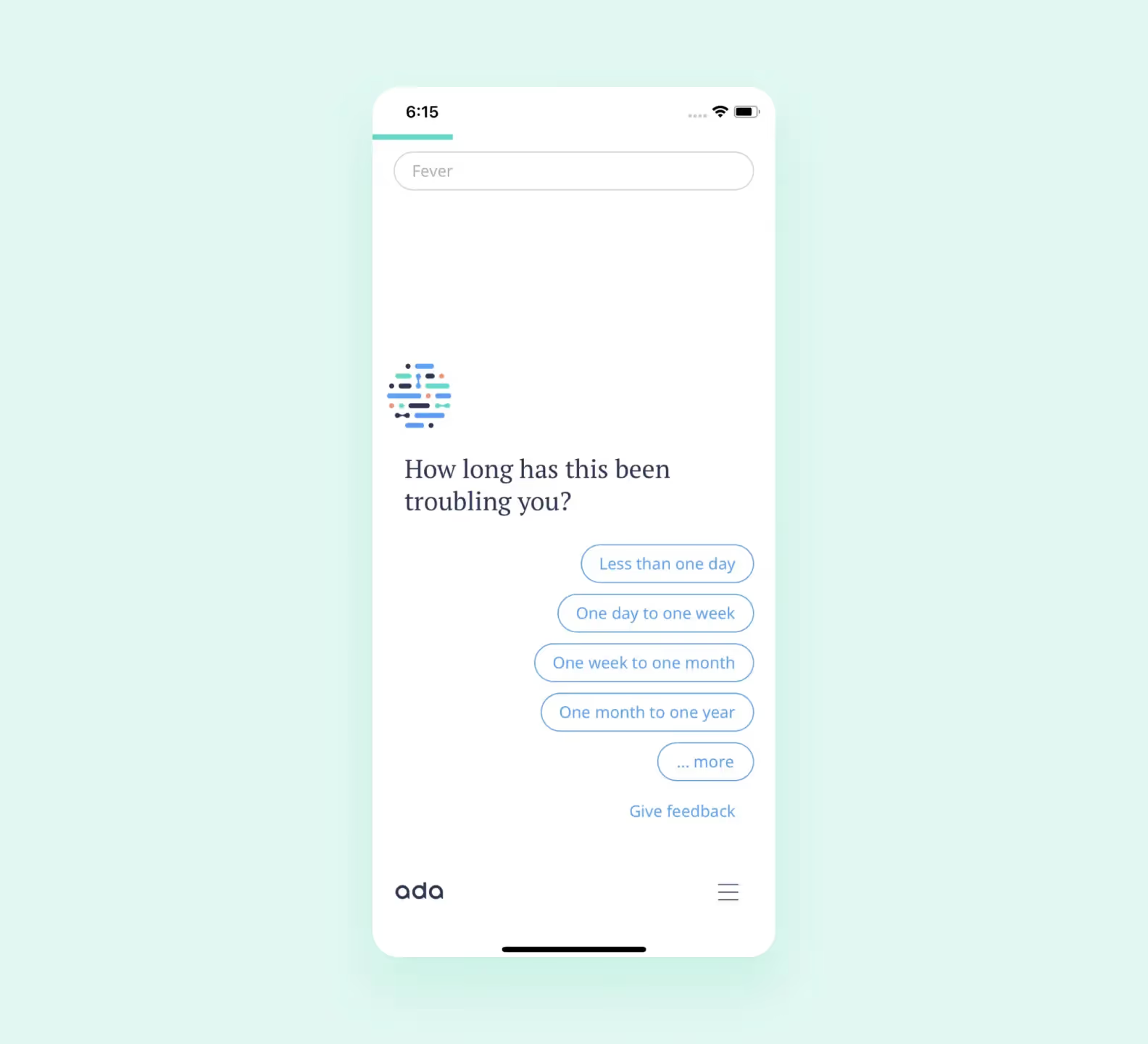
In healthcare healthcare software development solutions, the dashboard should present necessary health-related information such as insurance info, upcoming appointments, lab results, and payment due dates in a clear and concise way.
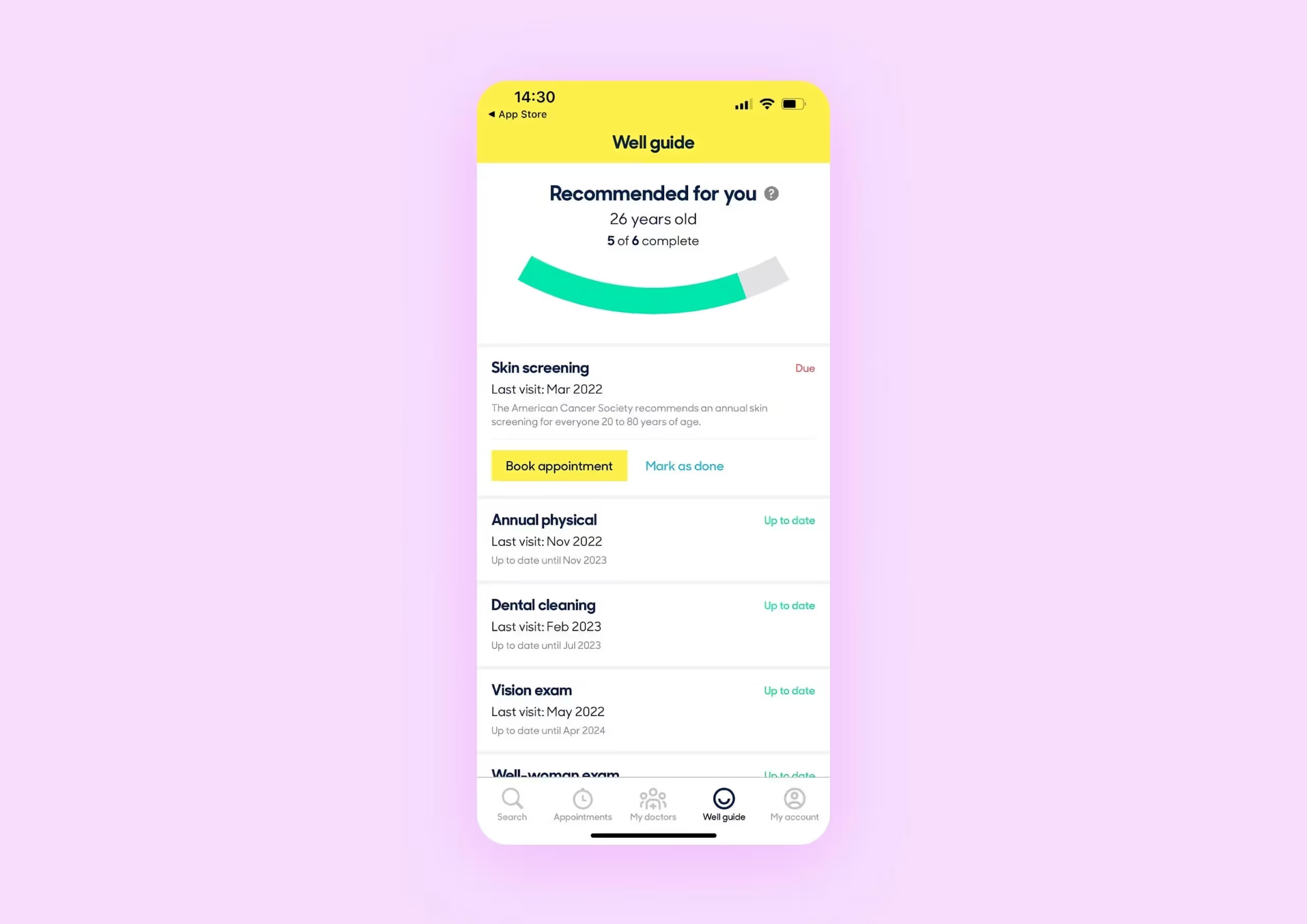
As we’ve already mentioned, medical data is highly sensitive and confidential, and unauthorized access to it can lead to harmful consequences, including identity theft, fraud, and data breaches. To mitigate this risk, as an extra layer of protection for healthcare solutions, platforms often set up additional PINs or enable recognition technologies to access accounts. Extra security such as biometrics or FaceID, for example.
Start your software development by deciding who you want to target with your product. First, think about the groups of customers who will use your platform (patients, healthcare providers, insurance companies, hospital administrators). Next you would need to study their needs and behavioral patterns for a smoother UI/UX design.
Work out what advantages your competitors have and how you can stand out on the market. Information gathered at this stage will be helpful throughout the whole journey, in defining a unique selling point or to create a marketing strategy.
The key to successful software development is to find experienced healthcare software development companies that are aware of potential pitfalls and have solutions for challenges that might come up. Do your research, review portfolios, and verify reviews.
Depending on your project idea, target audience and user journey map, certain features that will go to your MVP will be indispensable. You can use our list to help you identify what to work on first.
Alongside the development, you'll review and approve UI/UX designs for your app. As part of the process, you'll need to choose the desired color schemes, fonts, and elements that best correspond with your brand voice.
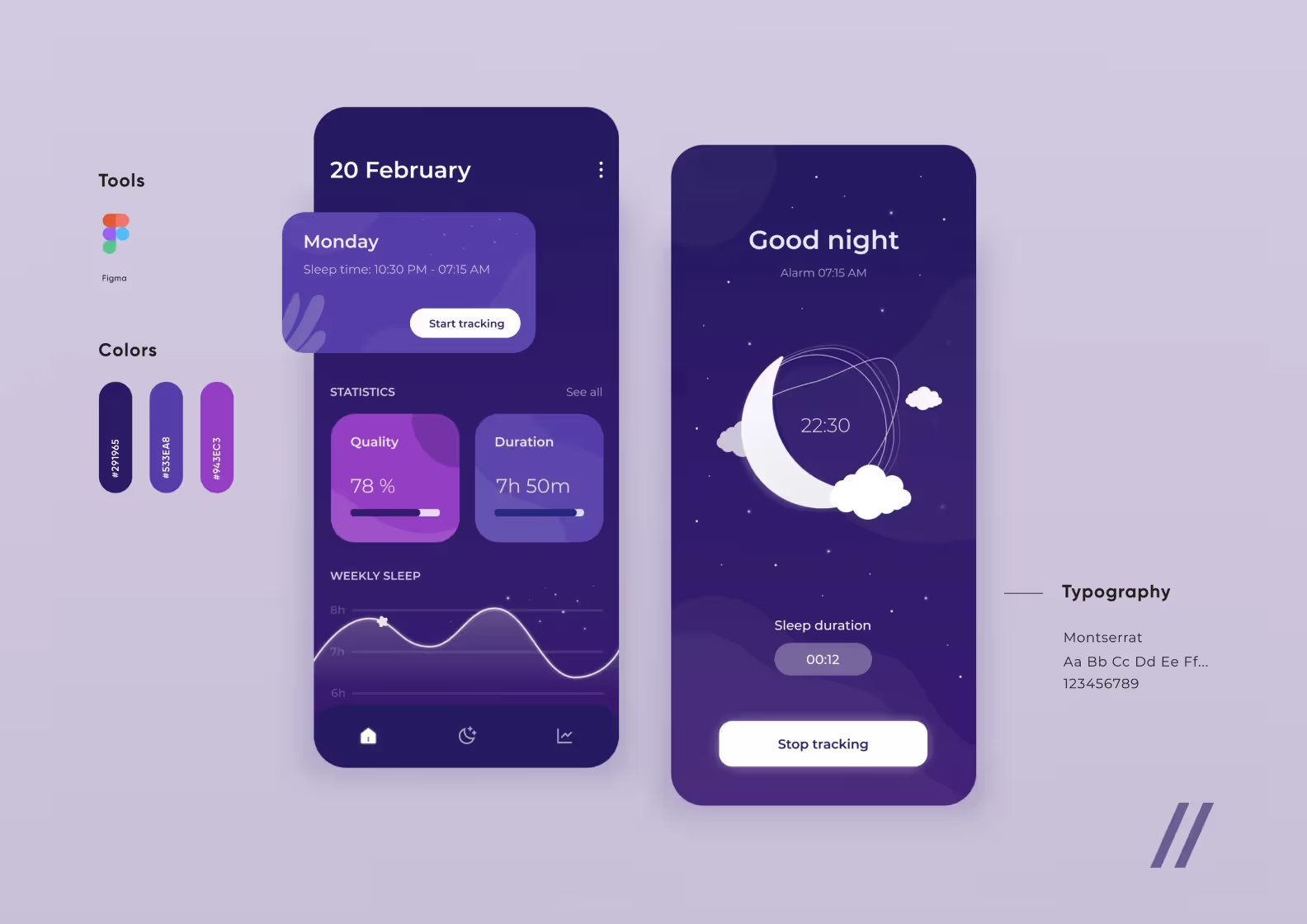
A minimum viable product (MVP) is a fast and cost-efficient solution for testing your business hypothesis. This approach helps start healthcare development with a limited set of functions, which would be enough for patients to use the app and provide feedback.
After you launch your healthcare MVP and collect feedback from your users, it's time to polish your solution, improve and release the full version. The software development services don’t end here, developers can continue to support you after launch by releasing further updates and fixing bugs as they occur.
Whether you plan to develop a large platform for a system of healthcare organizations or a simple app for a small doctor practice, knowing how the project budget is calculated is crucial. We put together 4 facts that can significantly impact the price of medical software.
How much does custom healthcare software development cost? Let’s break down the services and the numbers for a similar project.
🚨 Disclaimer: This is our estimation for healthcare software development services and we don’t guarantee other companies have the exact costs or timelines.
Overall, the mobile custom healthcare software development will cost you around $79,150 and will take approximately 5 months.
When you’re hiring a software development company, you should pay attention to these key factors.
Do you need help with healthcare development? Purrweb will help you bring your vision to life and test a business hypothesis without excessive costs. Our team of 200+ skilled professionals has 10+ years of experience in React Native development and user-centered UI/UX design in the medical field. We also specialize in creating custom healthcare software to meet the unique needs of your project.
➡️ Need help executing your custom healthcare software project? <a class="blog-modal_opener">Get in touch</a> with us for a free consultation.